German architect and urban planner Bruno Taut, who was active during the Weimar period, is famous for his fascination with ideal utopian cities.
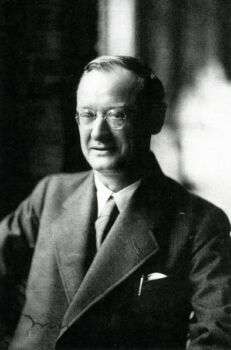
About His Life
Bruno Taut was born on May 4, 1880, in Konigsberg, Germany. During his last years as a student, he worked for the renowned Bruno Mohring in Berlin. Later, he worked with Theodor Fischer in Stuttgart. Then, in 1909, he founded his practice in collaboration with Frank Hoffman. In 1918, he co-founded the Nobembergruppe, commonly known as the Chain of Crystal. Then, in 1921, he became the Berlin city architect. Additionally, in the late 1920s, Taut won the respect and status of the pioneer of New Objective architecture. However, in 1933, he decided to leave Germany and moved to Russia, where he studied urban developments. Later, he visited Japan, traveled extensively, and settled in Turkey. Then, Bruno Taut died in Istanbul, in 1938.

Image source: https://search.creativecommons.org/photos/08491139-2d48-4087-ae89-27ea59b0483b by dave7dean
His Major Works
In 1924, Taut worked on what are now known as the six Berlin Modernism Housing Estates. The first project, the Hufeisensiedling, also known as the Horseshoe Estate (1925 – 1933), was erected to house 5,000 people and became one of the first major developments of the Weimar Republic. Additionally, in this urban estate each household could also have a garden.
Another particular example is the Onkel Toms Hütte, also known as Uncle Tom’s Cabin (1926), which is alongside the Grunewald forest. Further, it is a tremendous triumph of color and light.
Another striking color scheme can be observed at the Gartenstadt Falkenberg, also known as the Paint Box Estates, in Berlin.
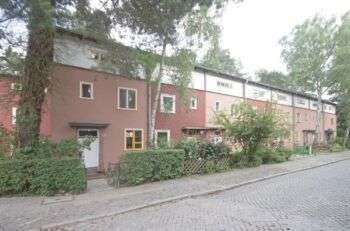
Image source:https://search.creativecommons.org/photos/e0f97973-f90a-4291-88a0-ce8a3d602c6e by dave7dean
Glass Pavilion for the Cologne Werkbund Exhibition
In 1914, Bruno Taut completed what he called his “little temple of beauty,” which is the Glass Pavilion constructed for the Cologne Werkbund Exhibition. The structure showcases the way glass could be manipulated into a practical building material. Further, the concrete structure has inlaid colored glass plates on the facade that acted as mirrors. The glass dome, in the shape of a prism, represented a complex geometric structure that was not only aesthetically astonishing but also functional. Only black-and-white photographs of the building, taken in 1914, remain today. Unfortunately, the building was destroyed after the exhibition, as it was not built for practical use.
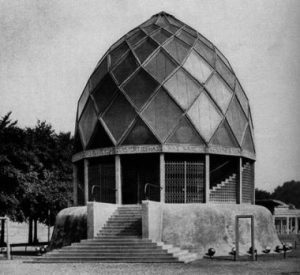
Image source: https://glassproject.com
Taut’s Style
Taut emphasized glass and color in architecture, and he used color for environmental, energy-saving, aesthetic, and spatial effects. His approach to design was based on a belief that architecture included more than a strictly functional role, but could change and enhance the quality of life. After becoming Director of Building and Planning for Marburg, Prussia, Taut’s Expressionist and utopian tendencies withered.
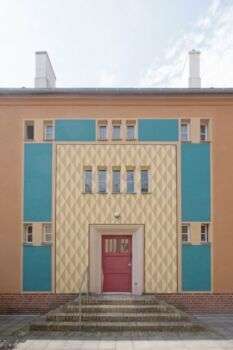
Image source: https://search.creativecommons.org/photos/7ff9e194-6b88-43a0-9ce0-49a40a931789 by dave7dean
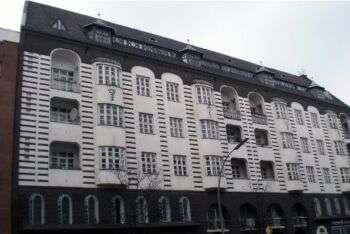
Image source: https://search.creativecommons.org/photos/6f7a97f2-5ea5-4f58-9dee-d11412a67c96 by onnola
Info sources:
